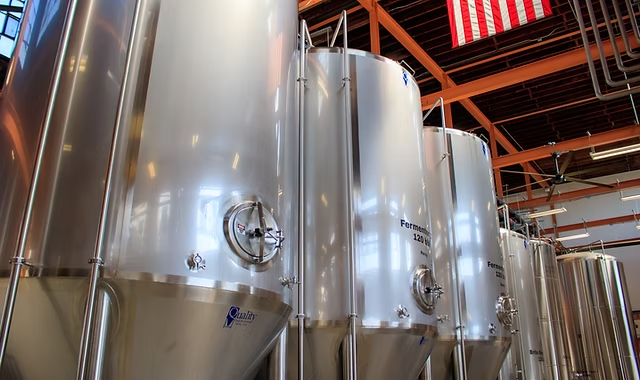For decades, the story of craft beer was one of explosive growth, fueled by passionate entrepreneurs, diverse flavors, and a fierce spirit of independence. Breweries sprouted in every town, each a testament to local pride and unique vision. But the winds are changing. What was once a seemingly endless expansion now faces a new, undeniable reality: consolidation is the new trend in craft beer, and it’s reshaping the industry as we know it.
This isn’t just about massive corporations swallowing up beloved independents (though that still happens). This emerging trend encompasses a spectrum of strategic moves, from regional powerhouses merging to create broader distribution networks, to smaller players joining forces to survive a hyper-competitive market. The “craft-on-craft” merger is becoming as common as the large conglomerate acquisition, driven by a confluence of economic and market pressures.
A variety of key factors are creating this environment ripe for consolidation:
- Market Saturation and Hyper-Competition: The sheer volume of breweries in operation has reached unprecedented levels. In the U.S. alone, there are over 9,000 breweries, all vying for tap lines, shelf space, and consumer attention. This saturation makes it incredibly difficult for smaller or even mid-sized breweries to stand out, grow, or even maintain market share. The novelty of “local beer” has worn off slightly, and consumers now have an overwhelming number of choices.
- Increased Cost of Doing Business: Inflation, supply chain disruptions, and rising material costs (malt, hops, cans, CO2) are squeezing profit margins. Running a brewery is more expensive than ever. Larger entities or merged operations can leverage economies of scale in purchasing, production, and logistics, offering a crucial competitive advantage.
- Distribution Challenges: Getting beer from the brewery to the consumer is a monumental task. Craft breweries often struggle to gain consistent access to distributors who are already managing vast portfolios. Consolidating allows brewers to offer a larger, more diverse portfolio to distributors, making them a more attractive partner and potentially gaining better terms. For smaller breweries, this often means survival.
- Succession Planning and Founder Burnout: Many craft breweries were founded 15-20 years ago by passionate individuals who are now looking towards retirement or seeking new challenges. Selling to a larger group or merging with another successful brewery provides an exit strategy, preserving the brand and jobs while allowing founders to cash out or transition.
- Access to Capital and Infrastructure: Expanding production, upgrading equipment, investing in marketing, or even just weathering economic downturns requires significant capital. Larger, consolidated entities often have better access to financing, allowing for critical investments that smaller, independent breweries cannot afford. They can also share infrastructure, from brewing equipment to sales teams, reducing overhead.
Pennsylvania, with its rich brewing history and vibrant modern craft scene, serves at the forefront of this national trend. The state has seen both strategic alliances and outright acquisitions as breweries adapt to the new normal.
One of the earliest modern day Pennsylvania based consolidations came in the formation of Artisanal Brewing Ventures (ABV), which, back in 2016, brought together Victory Brewing Company and Southern Tier. By combining their production capacity, distribution contracts, and sales teams, the Pennsylvania-based Victory and New York-based Southern Tier created a major regional powerhouse that could compete far more effectively than they could as separate entities.
More recently, the formation of B3 Beverage Company is the latest consolidation to come from the keystone state. This strategic alliance saw Bald Birds Brewing Co. from Jersey Shore and Yards Brewing Co. from Philadelphia join forces with Connecticut’s Two Roads Brewing. This isn’t a traditional acquisition where one swallows another, but rather a consolidation of operations and resources. And more recently B3 has added Maryland’s Heavy Seas and is rumored to take over Pennsylvania’s Workhorse Brewing.
On a smaller scale, Pennsylvania has seen local breweries move towards consolidation. Driven Collective is a recent merger which integrates Aslin Beer Co. (which has a taproom in Pittsburgh, PA) with Torch & Crown (NY based). By folding existing, successful breweries like Aslin into a larger, integrated platform, Driven Collective is consolidating production, distribution, and marketing efforts, allowing their brand access to a broader, better-resourced network.
Similarly, the acquisition of Saint Boniface Brewing by fellow Ephrata-based Pour Man’s Brewing illustrates a purely local facet of this trend. Instead of two separate entities competing in the same local market, they now operate under unified ownership, likely streamlining production, reducing overhead, and strengthening their collective brand presence in the region.
The era of unrestricted, fragmented growth for craft beer may be drawing to a close. The new reality is one where strategic partnerships, mergers, and acquisitions are becoming essential for survival and growth. While this might lead to fewer “new” breweries emerging at the rate we’ve seen, it will likely foster a more resilient, efficient, and sophisticated craft beer industry. The challenge for these consolidated entities will be to maintain the local character, innovation, and quality that defined the craft beer movement in the first place, ensuring that the spirit of independence doesn’t get lost in the pursuit of scale. The craft beer landscape is evolving, and consolidation is undoubtedly leading the charge.











